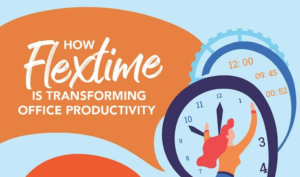
Top Tips For Extroverts Who Work From Home
Are you an extrovert? About half of the people in the U.S. are. But what exactly does that mean? The Myers-Briggs Type Indicator (MBTI) personality

Are you an extrovert? About half of the people in the U.S. are. But what exactly does that mean? The Myers-Briggs Type Indicator (MBTI) personality

“Absence makes the heart grow fonder.” No doubt, you’ve heard this familiar quote. You may even have said it to encourage others who are separated

It is imperative to establish a robust onboarding procedure for building a productive, engaged, and cohesive workforce. However, a small portion of new employees agree

For more than a year now, many of us have been enjoying our work at home experience. On the surface, this has been an opportunity

Soon, business leaders will turn their attention to developing a return to work plan for employees. And for many, that plan will need to include

Over the last ten months, the entire workplace changed, as did the expectations of employees and contractors. But not everything that happened last year was

In the remote era, where face-to-face meetings aren’t routinely possible, how do you cultivate a strong company culture? Before the global health crisis hit, our

Many companies have been doing remote work for some time now. But most haven’t yet optimized remote team collaboration. Many businesses will remember 2020 as

Working from home. Schooling from home. Social distancing. New workplace norms. New consumerism rules. Mask mandates. It’s difficult to identify one aspect of personal life

Remote work, and working within a remote team, is now a part of the new normal—but not everyone was prepared to make that transition. This

In a recent remote work survey of some 1,200 office workers, PwC found that in the wake of the Coronavirus pandemic 77% would like to

What is the best way to evaluate remote employees? Is an online performance review the answer? We don’t have to tell you: Due to the

All work and no play makes Jack a dull boy. So goes the saying. For American professionals, however, the work week — and work itself

The pivot toward remote work happened suddenly for many. A BLS survey (June 2020) found 31 percent of workers were teleworking or working from home.

I want you to look around at your employees — in person where possible, and on that Zoom call. Then, I want you to think

2020 is changing the way we work, without question. As the nature of the workplace transforms, performance management faces new challenges. We’ve seen many workforces

Remote work isn’t new. In fact, working from home been on the rise since 2010. But this new decade brought with it COVID-19, triggering a

In an outlook where the future looks bleak, only true leaders guide their team through the storm and come out stronger on the other side.

An ill-suited conversation. A moment of innuendo. Or a comment targeted at our gender, wardrobe choices, and even our hairstyles. Each, depending on context, are

Many companies and job titles will go through drastic changes due to the ongoing COVID-19 pandemic. The HR sector and the people working in it

Virtual assistants (VA) offer young brands the flexibility to focus on other areas of the business. Don’t forget to subscribe to the podcast so you

In some countries, as lockdown measures continue to ease, businesses are opening and employees are heading back to work. But some of us are still

Listen to the full conversation and see our questions for the upcoming #WorkTrends Twitter Chat. And don’t forget to subscribe to the podcast, so you

I’m the founder and CEO of a 40+ person HR consulting business. My husband is a preschool teacher, and I have two kids — one

Listen to the full conversation and see our questions for the upcoming #WorkTrends Twitter Chat. And don’t forget to subscribe to the podcast, so you